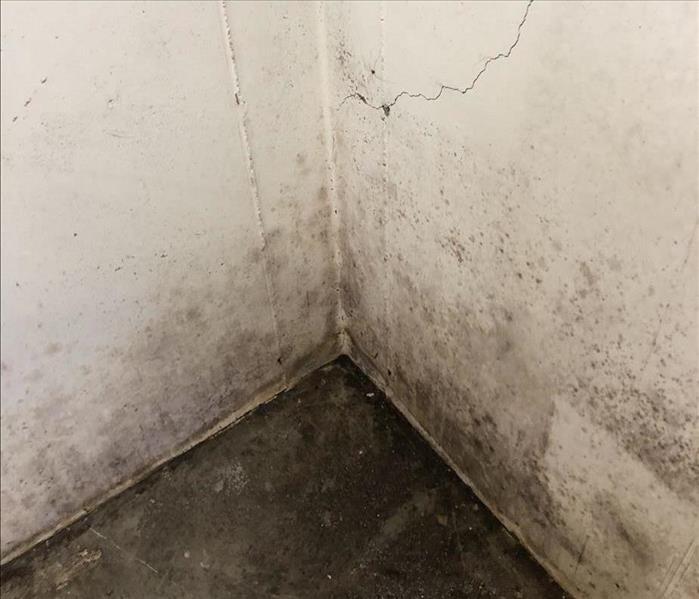5 Reasons Modern Buildings Have more Mold Issues
8/27/2021 (Permalink)
 This customer suffered heavy mold damage on their drywall. We made it "Like it never even happened."
This customer suffered heavy mold damage on their drywall. We made it "Like it never even happened."
Mold is an organism that appears naturally outdoors and indoors. Many property owners worry about it growing in their homes and commercial buildings. While mold can cause a significant amount of property damage, it still needs a specific type of atmosphere to grow. That’s why roof leaks, pipe leaks, or faulty window seals are so problematic. They create the perfect breeding grounds for fungi.
Here at SERVPRO we make it a point to learn something new every day. During our research, we found an interesting statistic that we'd like to share. Mold damage wasn’t as prevalent in residential and commercial buildings 100 years ago as it is today. We did more research and sussed out the top five reasons modern properties are more likely to experience mold damage than older homes and commercial buildings.
Time
According to The Collection Plan in 2018, the average house took about 7 months from the beginning of construction to the end. These construction goals still hold true today. Shorter construction times aren’t inherently bad. Technological advancements have allowed us to finish construction projects must faster. There is also a higher demand for more houses now than there was in the 1920s. The consumer plays a role too. As a society, we expect faster build times.
The issues that cause mold damage happens when builders shorten the construction time by cutting corners. Builders may use unskilled laborers. They might use less material where more is required to get the job done right. They might not have the architect oversee the project to ensure the house is being built correctly. Keep in mind this isn’t the case for all builders. It is, however, more common now than it used to be.
Materials
The types of materials have changed as well. Now builders use Oriented Strand Board (OSB) and particleboard. Materials like this are more porous than the timber used 100 years ago. Modern building supplies hold on to moisture longer. It leaves your house susceptible to possible mold damage if the humidity gets too high.
HVAC system
100 years ago, central heating and air conditioning was an expensive luxury few could afford. They were also too large for residential homes. According to Energy.gov, they weren’t widely available for residential properties until the early 1930s. It wasn’t until the 70s that forced-air HVAC systems were installed on newly built properties.
HVAC systems create condensation. Ideally, it drips into a condensation pan. However, clogs happen and, condensation pans can potentially overflow. Additionally, condensation can build up in the ducts. When left untreated ducts, and vents are the perfect breeding ground for mold. That is why cleaning your ducts is so important. It can clean out the mold and therefore improve the overall air quality.
Architecture
Houses come in all shapes and sizes. Did you know that those shapes and sizes are usually designed for a specific climate? Flat roofs are intended for dryer climates like Arizona. Whereas Capecods and Ranch style homes are ideal for rainier parts of the world. When a property is built based on design trends instead of practicality, roofing leaks and clogged gutters are more likely to occur. If the subsequent water damage is not treated, it can cause mold.
Lower Tolerance
According to Diane Hoffmaster, a microbiologist, and writer of the blog Turning The Clock Back, American culture has a decreasing tolerance to dirt. Cleanliness is seen as a moral value. Therefore if mold is present in or on the property we fear being shunned by the community.
The aforementioned factors may have a relatively low impact on the number of mold damages we see today. Could it just be that 100 years ago, property owners didn’t worry as much about mold damage? If only walls could talk! If you’d like to talk to us about mold damage on your property call us today at (513) 541-3200 to schedule a free estimate.

 24/7 Emergency Service
24/7 Emergency Service